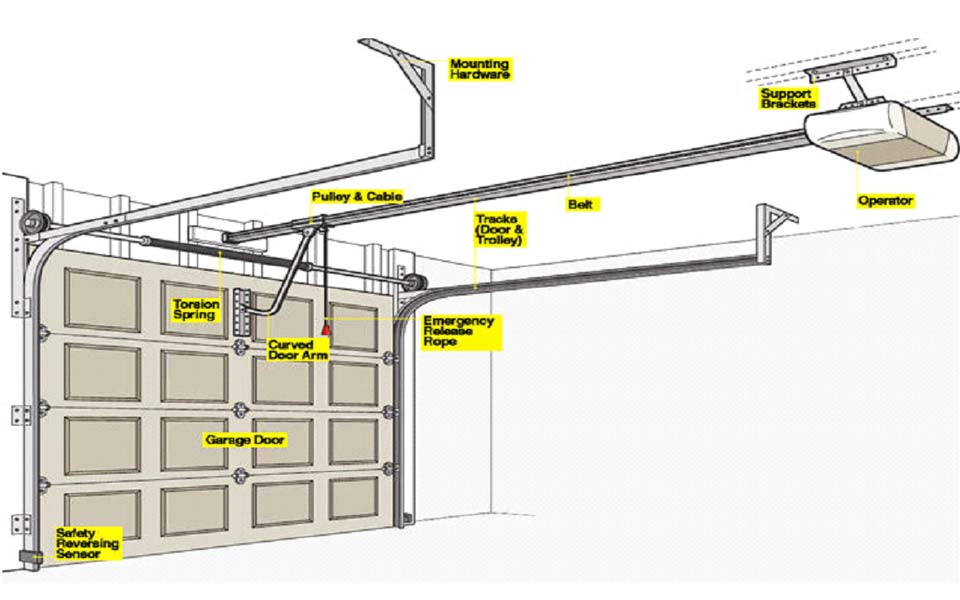Garage door openers have become an indispensable part of modern living, offering convenience and security to homeowners. But have you ever wondered how a garage door opener works? In this comprehensive guide, we’ll delve into the inner workings of these automatic entry systems, shedding light on the technology behind them and exploring the various components that make them function seamlessly.

Introduction
In today’s fast-paced world, where time is of the essence, the invention of the garage door opener has revolutionized the way we access our homes. Gone are the days of manually lifting heavy garage doors, as these automated devices have made entry and exit a breeze. But what exactly goes on behind the scenes to make this possible? Let’s find out.
Understanding the Mechanism
At the heart of every garage door opener lies a complex yet elegant mechanism designed to provide effortless operation. The process begins when the user activates the opener, either through a remote control, a wall-mounted switch, or a smartphone app. This signal is then transmitted to the opener unit, which interprets it and initiates the opening or closing sequence.
How A Garage Door Opener Works: Exploring the Components
Now, let’s take a closer look at the key components that enable a garage door opener to function effectively:
- Motor: The motor serves as the powerhouse of the garage door opener, responsible for generating the necessary force to move the door up and down. Most modern openers use either a chain, belt, or screw drive system to transfer power from the motor to the door.
- Drive Mechanism: As mentioned earlier, there are three main types of drive mechanisms used in garage door openers:
- Chain Drive: This traditional mechanism utilizes a metal chain to pull or push the door along its tracks. While affordable and durable, chain drive openers tend to be louder compared to other options.
- Belt Drive: Belt drive openers employ a reinforced rubber belt to operate the door, offering quieter operation and smoother performance. Although slightly more expensive than chain drive models, they are ideal for homeowners who prioritize noise reduction.
- Screw Drive: Screw drive openers utilize a threaded steel rod to move the door, offering robustness and reliability. While not as quiet as belt drive openers, they require minimal maintenance and are well-suited for heavier garage doors.
- Remote Control: The remote control allows users to operate the garage door opener from a distance, providing convenience and flexibility. Most remotes use radio frequency signals to communicate with the opener unit, triggering the desired action with the press of a button.
- Safety Sensors: Safety sensors are a critical feature of modern garage door openers, designed to prevent accidents and injuries. These sensors emit an invisible beam of light across the door opening, detecting any obstructions in the path of the closing door. If an object or person is detected, the sensors will automatically reverse the door’s direction, keeping everyone safe.
Read too: Why Your Liftmaster Garage Door Won’t Stay Closed and How to Fix It? Troubleshooting Tips
Conclusion
In conclusion, the garage door opener is a marvel of modern engineering, offering unparalleled convenience and security to homeowners worldwide. By understanding how a garage door opener works and familiarizing yourself with its various components, you can ensure smooth operation and prolong the lifespan of your automatic entry system. So the next time you press that button and watch your garage door effortlessly glide open, you’ll have a newfound appreciation for the technology at work behind the scenes.



Leave a Reply